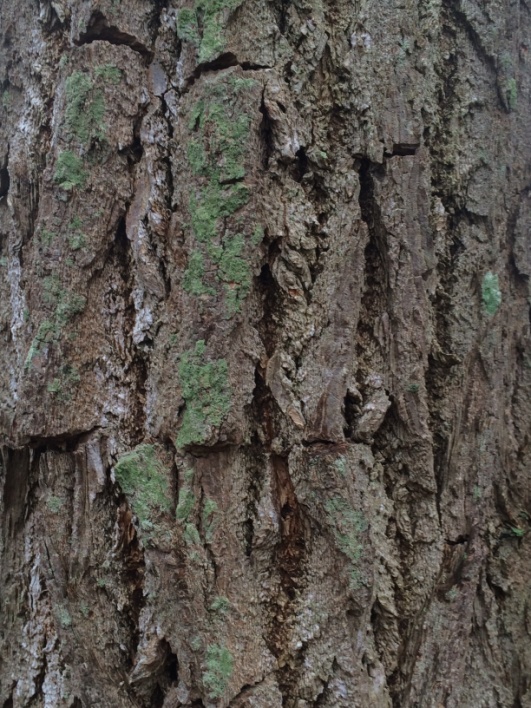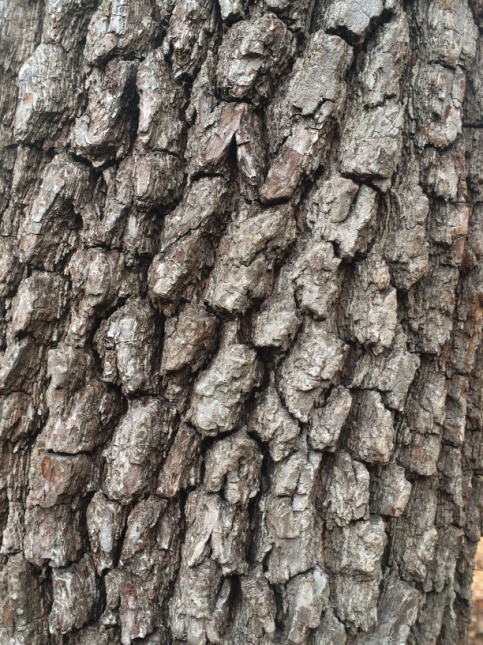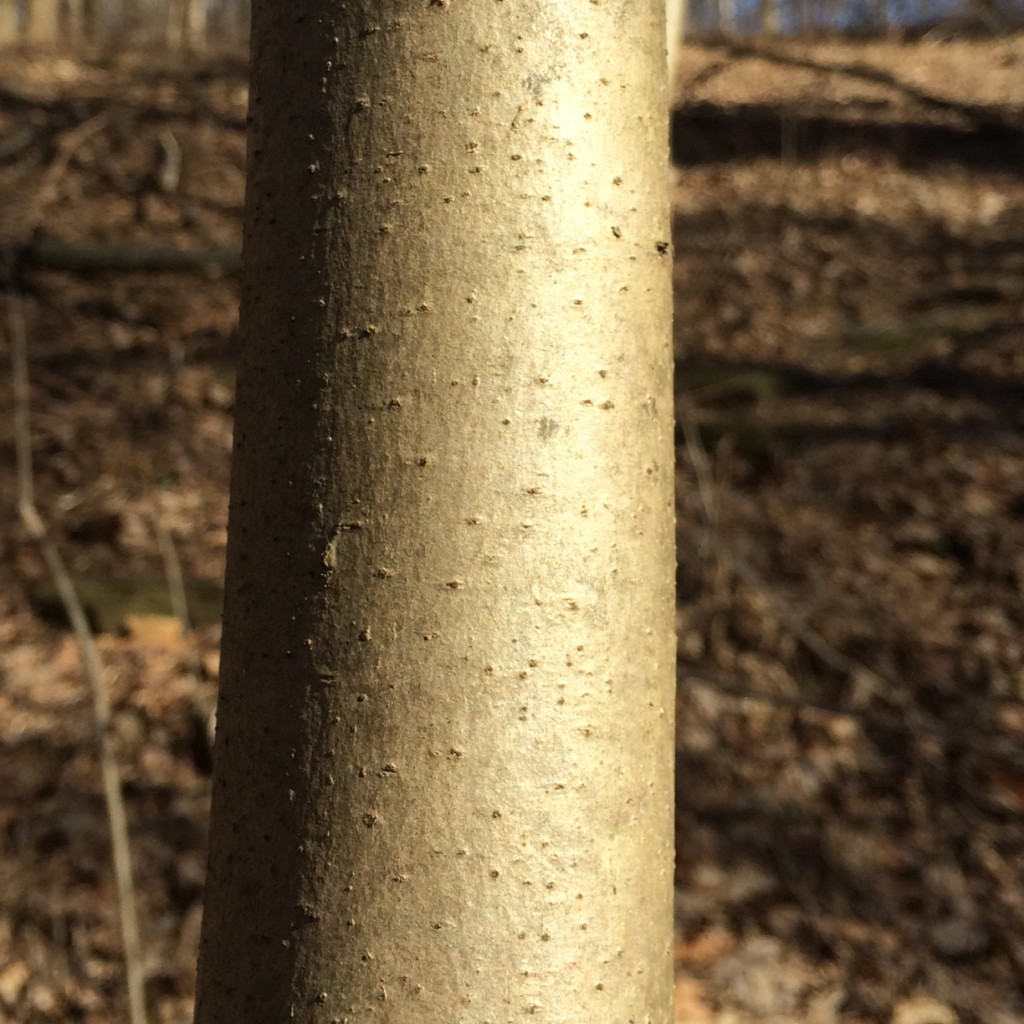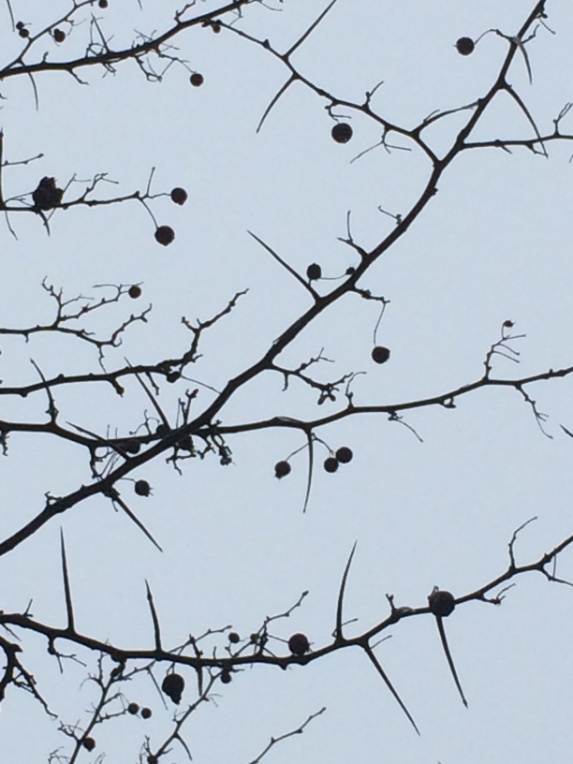By Melissa Nase, Manager of Land Stewardship
With so many efforts dedicated to tracking the biggest or tallest members of our forest, I thought it was a worthy endeavor to dedicate some time to these smaller, perhaps lesser known, understory trees in our woods. While they will never be the biggest or tallest or most majestic, they deserve accolades of their own. Many produce fruit that are prized by birds and mammals, especially during these winter months. Others provide habitat and cover. And others are just simply beautiful trees, small in stature, but with intricate details that are much easier to observe up close due to their size.
Dogwood (Cornus florida)
 A common tree in both the woodland and residential landscape, this tree is easily identified by its white spring blooms in April or May. In the winter, however, the bark and form gives it away. With its light tan, scaly, shallowly furrowed bark, dogwoods take on an alligator type texture. It has a graceful, pyramidal form and is often low branching or multi-stemmed. Later in winter, the buds of new flowers will form like little caps on the ends of the upward facing branches.
A common tree in both the woodland and residential landscape, this tree is easily identified by its white spring blooms in April or May. In the winter, however, the bark and form gives it away. With its light tan, scaly, shallowly furrowed bark, dogwoods take on an alligator type texture. It has a graceful, pyramidal form and is often low branching or multi-stemmed. Later in winter, the buds of new flowers will form like little caps on the ends of the upward facing branches.
Sassafras (Sassafras albidum)
 When you find a sassafras tree, you tend to find many sassafras trees. This is one native plant that suckers readily, sending up new shoots from its root system, forming clusters of new trees. In the forest, they are typically found in groves, easily identified by their twisted, gnarly shaped branches. The brown bark is deeply furrowed and forms rectangular blocks with horizontal “breaks”.
When you find a sassafras tree, you tend to find many sassafras trees. This is one native plant that suckers readily, sending up new shoots from its root system, forming clusters of new trees. In the forest, they are typically found in groves, easily identified by their twisted, gnarly shaped branches. The brown bark is deeply furrowed and forms rectangular blocks with horizontal “breaks”.
Persimmon (Diospyros virginiana)
 While the common persimmon is not as common at the Schuylkill Center as the two aforementioned understory trees, there are a handful of them spread throughout old meadows and fields here. This is another tree with distinct bark: it resembles the scales of a dogwood, but it is thicker, more deeply furrowed, and very blocky. You may see bright orange, plum-sized fruits hanging from its bare branches from fall through the winter. Often they are too high to reach, but you may get lucky to snag one for a snack before the wildlife does.
While the common persimmon is not as common at the Schuylkill Center as the two aforementioned understory trees, there are a handful of them spread throughout old meadows and fields here. This is another tree with distinct bark: it resembles the scales of a dogwood, but it is thicker, more deeply furrowed, and very blocky. You may see bright orange, plum-sized fruits hanging from its bare branches from fall through the winter. Often they are too high to reach, but you may get lucky to snag one for a snack before the wildlife does.
Pawpaw (Asimina triloba)

You may have come across a pawpaw grove on a hike in our woods and not even have realized it. The few young groves that exist here more closely resemble sticks in the ground during the winter than a distinct cluster of trees and saplings. Like sassafras, pawpaws spread through their underground root system, forming new trees by sending up shoots. They can also be propagated fairly easily through seed, although pawpaw often has trouble with pollination and therefore its fruit production is often unreliable. Pawpaws have smooth grey-brown bark that gets slightly more textured with age and dark brown buds. They often have arching trunks and don’t branch until more mature.
Dotted Hawthorn (Crataegus punctata)
 Dotted hawthorns grow along forest edges and in old meadows and fields. At the Schuylkill Center, they were planted in the 1960s along a fence row toward the front edge of the property to discourage trespassing. How would a tree discourage trespassing, you may wonder. Hawthorns have sharp spiky thorns, sometimes several inches long, which could be very painful to any passerby. These thorns on the branches are a good way to identify the plant, as well as their bright red berries that persist through the winter as food for birds. It has greyish bark that is irregularly ridged and furrowed.
Dotted hawthorns grow along forest edges and in old meadows and fields. At the Schuylkill Center, they were planted in the 1960s along a fence row toward the front edge of the property to discourage trespassing. How would a tree discourage trespassing, you may wonder. Hawthorns have sharp spiky thorns, sometimes several inches long, which could be very painful to any passerby. These thorns on the branches are a good way to identify the plant, as well as their bright red berries that persist through the winter as food for birds. It has greyish bark that is irregularly ridged and furrowed.
Enjoy our January mobile field guide as you walk, hike, and play in the winter forest. See other Field Guide posts here.
